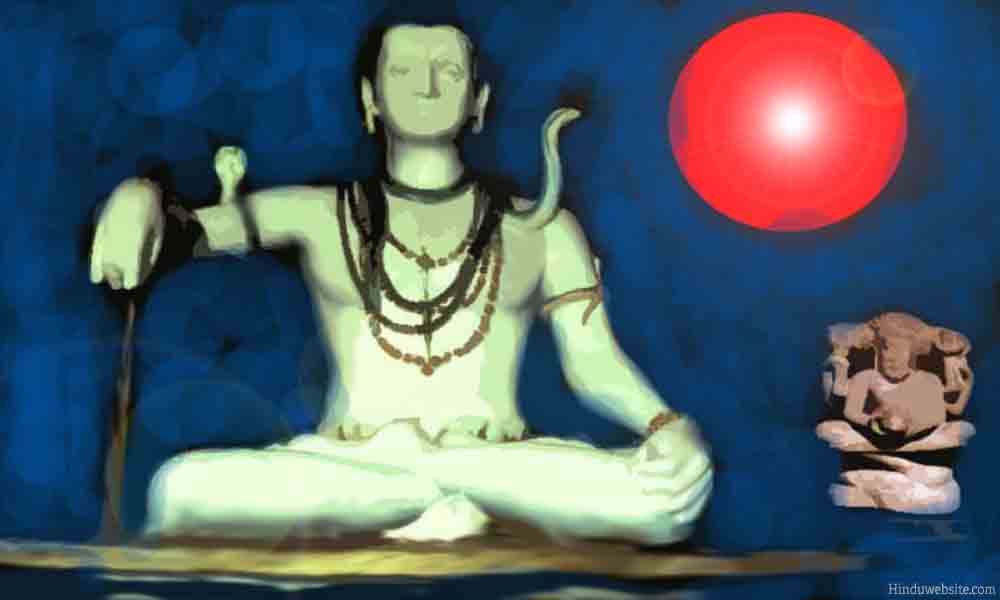
Siddhas and Siddha Tradition

Siddha means a person who has attained siddhi, perfection, or supernatural abilities. The Yoga Sutras of Patanjali provides a long of list 64 such siddhis or supernatural powers attained by yogis as they master the Eightfold (ashtanga) yoga. The list includes clairvoyance, knowledge of the past and future, mind reading, astral travel, flying in the air, supreme health, ability to enter other bodies, etc.
In Hinduism, the Siddhas represent a tradition (sampradaya) or a lineage of yogis, adepts, or perfect ones who have achieved liberation from the cycle of births and deaths and attained extraordinary mental and physical powers. The tradition recognizes 84 siddhas of great prominence who belonged to the Tantra tradition of Saivism. Of the 84 Siddhas, nine are considered the highest and referred to as the nine nathas (navanath).
Prominent among them were Matsyendranath believed to be the founder of Nath tradition, and Goraknath believed to be the inspiration behind Goraknath Saivism. Followers of the sect practice severe austerities, a special branch of yoga called hatha yoga, and several esoteric methods to perfect their minds and bodies. It is possible that the nine masters may represent the nine energies or perfections (siddhas) of Shiva or Shakti or even Vishnu.
It is believed that due to their supernatural abilities some of the Siddhas are still alive and active in the earth plane, and have the power to manifest at will with their ethereal bodies in physical form. They are believed to reside in a special region in the Himalayas called Siddhashrama, which is mentioned in some Puranas.
In southern India, the tradition of Siddhas emerged as Sittar tradition, which dates back to the 7th century, with a literature of their own. Tirumular, the author of Tirumantiram, which describes Kundalini yoga and other tantric practices, is considered the first of the Sittars. His works occupy a prominent place in Hindu, Tamil, and Saiva literature.
Siddha yogis practice extreme asceticism and magical rituals. They worship Shiva and Shakti in their benign, ascetic and fierce forms. In the past they used to indulge in alchemy, using mercury, to transform metals as well as their bodies and become physically immortal. In public they may appear in fierce forms and display antisocial behavior to discourage people from worshipping them. Their main goal in such practices is to curb their egos, avoid public adulation, and cultivate dispassion and humility.
The Siddha masters or teachers use Shaktipath or the path of Shakti to initiate neophytes into the tradition. It is believed that using this method a guru can transfer his immense spiritual energy (shakit) to his disciplines by a mere glance or touch and transform them or purify them for liberation. In modern times Swami Muktananda popularized this practice, under the banner Siddha Yoga, which is considered a form of Kashmiri Saivism. Followers of Siddha Yoga acknowledge the Siddha tradition and revere all the Siddha masters including the 84 original Siddhas, apart from Swami Muktananda and the lineage of gurus who preceded him.
Siddha tradition is also common to Jainism and Buddhism. Tibetan Buddhism has a Siddha tradition. Some of the Siddhas revered by the tradition bear the same names as the 84 original Siddhas. In Jainism Siddhas are a special class of beings who have attained liberation by freeing themselves totally from Karma and corporeality. They are souls in their purest enlightened form, who live in the highest region of the universe known as the region of the Siddhas (Siddha-sila). From these descriptions it becomes clear that the adept immortal masters of Himalayas (Shambhala) are none other than the Siddha Gurus. They guide the spiritual progress of the world from their secret cove in the mountains and help those who work for their liberation from the cycle of the births and deaths. These masters figured prominently in the writings of the founders of the Theosophical Society and later in the writings of some prominent self-help teachers. Some believe that the spiritual teachers originally came from the Atlantis. The founder of Saiva Siddhanta Church, Sivaya Sadguru Subramanyaswami, traced the origin of the Siddhas to the sunk continent of Lemur.
Suggestions for Further Reading
- About Adityas, the 12 Suns or Solar Deities
- Agasthya the Hindu Sage who drank the oceans
- What is Ahimsa, Non-violence or Non-injury?
- Ajivikas - Their History and Philosophy
- What is Buddhi Yoga?
- What is Prana? The Five Types of Breath
- Rudra, Rudras the Gods of Hinduism
- Gods of Hinduism, the Eight Vasus
- The History, Practice, Benefits and Types of Yoga
- The Concept of Atman or Eternal Soul in Hinduism
- The Problem of Maya Or Illusion and How To Deal With It
- Belief In Atman, The Eternal Soul Or The Inner Self
- Brahman, The Highest God Of Hinduism
- The Bhagavad Gita Original Translations
- The Bhagavadgita, Philosophy and Concepts
- Bhakti yoga or the Yoga of Devotion
- Hinduism And The Evolution of Life And Consciousness
- Why to Study the Bhagavadgita Parts 1 to 4
- Origin, Definition and Introduction to Hinduism
- Symbolic Significance of Numbers in Hinduism
- The Belief of Reincarnation of Soul in Hinduism
- The True Meaning Of Renunciation According To Hinduism
- The Symbolic Significance of Puja Or Worship In Hinduism
- Introduction to the Upanishads of Hinduism
- Origin, Principles, Practice and Types of Yoga
- Essays On Dharma
- Esoteric Mystic Hinduism
- Introduction to Hinduism
- Hindu Way of Life
- Essays On Karma
- Hindu Rites and Rituals
- The Origin of The Sanskrit Language
- Symbolism in Hinduism
- Essays on The Upanishads
- Concepts of Hinduism
- Essays on Atman
- Hindu Festivals
- Spiritual Practice
- Right Living
- Yoga of Sorrow
- Happiness
- Mental Health
- Concepts of Buddhism
- General Essays